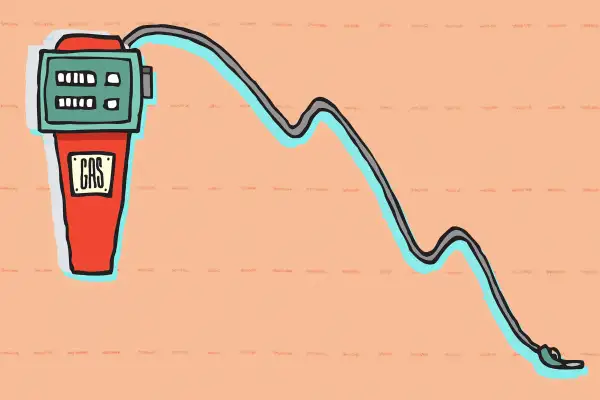Why Gas Prices Will Probably Keep Falling This Summer

Although gas prices often peak during the warmest months of the year when driving demand is high, experts point to several positive factors shaping up for drivers this summer.
The average price for a gallon of gas is now about $3.50, which is 14 cents cheaper than a month ago and the lowest national average since March, according to GasBuddy.
Gas prices have fallen because oil prices are down 7% in the past month, and crude oil accounts for 55% of what you pay for a gallon of gas.
A drop in gasoline demand due to less driving activity after the Memorial Day holiday has also taken pressure off prices. And according to a recent report from AAA, increasing gasoline supply is another bit of good news for motorists.
“Gas prices will likely keep up this slow sag now that we are past the Memorial Day travel weekend,” AAA spokesperson Andrew Gross said in the report. “But it’s time to start weather watching as the Atlantic Hurricane Season begins June 1st, and forecasters predict it will be very active.”
The Gulf Coast is home to about half of the country’s refinery capacity, and while it’s relatively rare for hurricanes to cause a huge slow down, the possibility for a major event is always a concern from around June to November.
How much could gas prices fall this summer?
Denton Cinquegrana, chief oil analyst at the Oil Price Information Service, says gas prices could fall 10 to 15 cents per gallon in the next six weeks.
The longer-term outlook will depend on weather, but if it “cooperates” Cinquegrana says prices could range from about $3.35 to $3.50 for the summer. “That is a big if though,” he cautions.
“In addition to hurricanes, I'd keep an eye on extreme heat and their impact on refinery operations. Refineries are built to run in triple digit ambient temperatures for a handful of days in a row...not 3-4 weeks in a row like last year,” Cinquegrana says.
Patrick De Haan, head of petroleum analysis at GasBuddy, said in a report Monday that “it’s very likely we’ll continue to see gas prices fall as we approach July 4.” While “the future looks bright for falling fuel prices across the board,” De Haan agrees that a bad storm could upend that forecast.
The U.S. Energy Information Administration (EIA) said in its outlook last month that gas prices will average about $3.70 during the summer driving season, which runs from now until September. The EIA forecasts that refinery capacity this summer will likely be higher than the average over the past five years, but about 3% lower than the 2019 peak.
High gas prices are less of a risk after the summer months, experts say. By the end of the year, gas prices are forecasted to drop to about $3.40 nationally, according to the EIA.
Gas is currently cheapest in Oklahoma ($2.95 per gallon of regular), Mississippi ($2.97) and Arkansas ($2.98). Several other states could soon join them below the $3 threshold — like Texas ($3.00) and Louisiana ($3.03).
More from Money:
Summer Car-Buying Guide: 3 Tips to Get the Vehicle You Want at the Best Price
Airfare Is Cheaper This Summer. Here's How to Save on Your Next Trip

